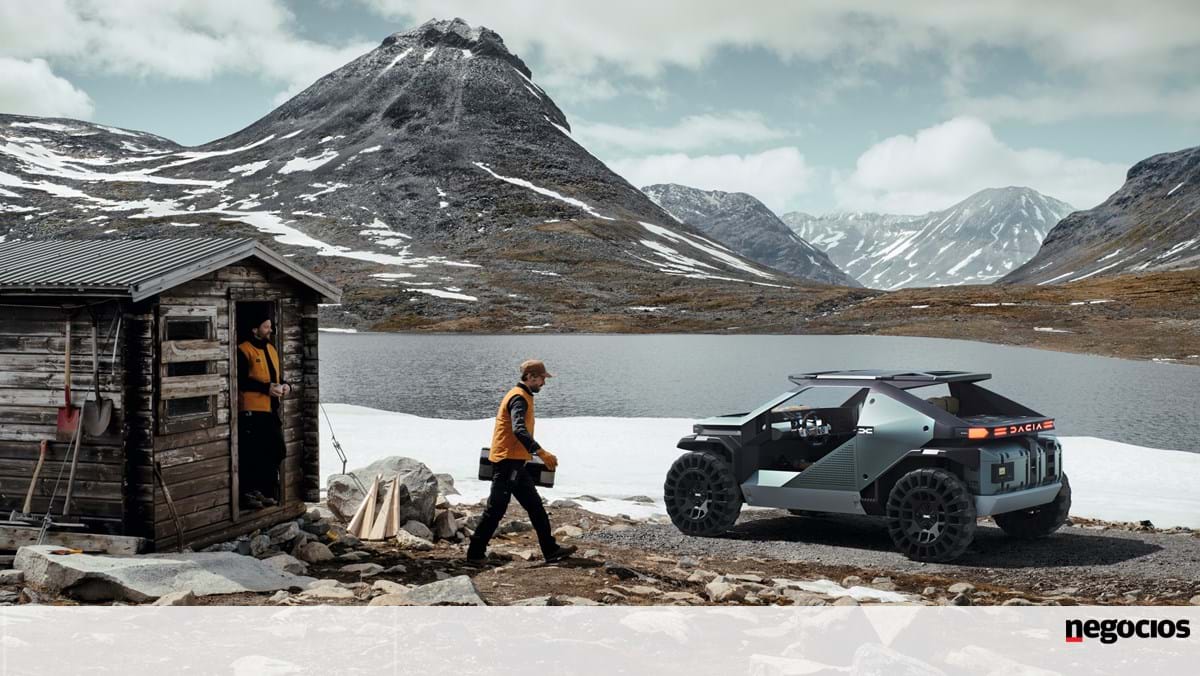The Manifesto prototype, according to the brand, is an idea-testing platform and a nature-connected, eco-friendly vehicle, more like a small ‘rover’ for Mars missions than its traditional all-terrain model. , and full of innovations, some of which will also be available on cars in the Dacia range.
However, it is not a future Dacia model. Rather, a statement about the brand’s goal of being on the side of customers as they become increasingly interested in outdoor activities, while expanding the values and qualities that built its automotive success story.
Indeed, the brand’s first prototype presented since 2009, the year of the unveiling of the Duster style study, on the other hand, Dacia, together with Manifesto, shows its desire to liberate the Romanian manufacturer into the Renault range, since it became managed by Luca de Meo.
Basic but elegant
With no doors, windows or windshields, Dacia strives with this prototype to redefine the essentials, to provide an increasingly simple and authentic experience between occupants and the environment.
Travelers can also be close to nature and, at the same time, stay connected to the services available on the “smartphone”: Dacia’s Bring Your Own Device feature allows the integration of a “smartphone” into the dashboard and operates a computer. Although it is already available on many models of the brand, this system will be further developed in the future.
Another first in the statement is YouClip, a very simple system for securing a variety of practical and modular accessories, which will be incorporated into future models.
Finally, at the front, a single headlight provides all the required light and can be detached for use as a powerful flashlight.
Oriented towards outdoor activities
For outdoor activities, the Manifesto brings together all the hallmarks of off-roading, including four-wheel drive, ample ground clearance, large rims and a chassis designed to withstand the toughest terrain.
Among the interesting things, it is completely waterproof – the interior can be cleaned with a water jet – and the removable seat covers can be converted, in seconds, into sleeping bags. Roof rails can carry all kinds of loads because they can change into a variety of configurations.
Finally, a dedicated, detachable battery pack delivers power through a local outlet, turning the Dacia prototype into a power source for any outdoor activities that require it.
environmentally smart
With this prototype, the brand is presenting its vision of a car with a low environmental footprint. Being compact and lightweight, it consumes less energy.
And much of the bodywork is built from recycled plastic, materials made from treated polymers, with a “spotted” finish called Starkle.
The interior is also equipped with natural materials, such as cork that covers the dashboard. As with the latest Dacia models, the chrome trim is gone.
The airless tires of the prototype are another innovative feature, as they are aimed at respect for the environment as well as economic savings. The main principle is durability: these tires are puncture-resistant and last as long as a car.
Business in Paris, at the invitation of Dacia

“Writer. Analyst. Avid travel maven. Devoted twitter guru. Unapologetic pop culture expert. General zombie enthusiast.”

